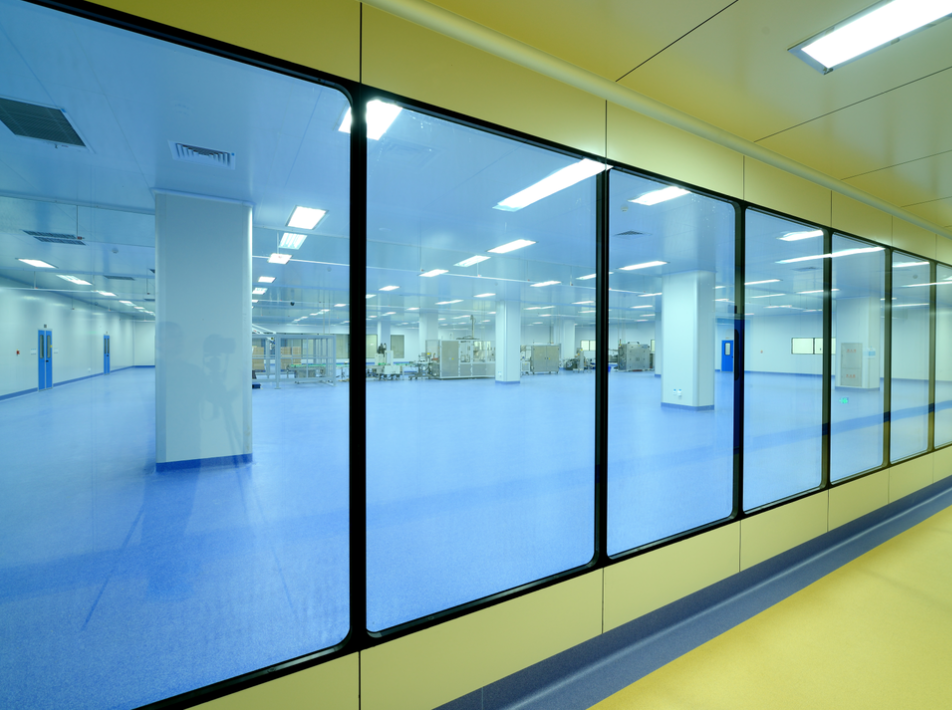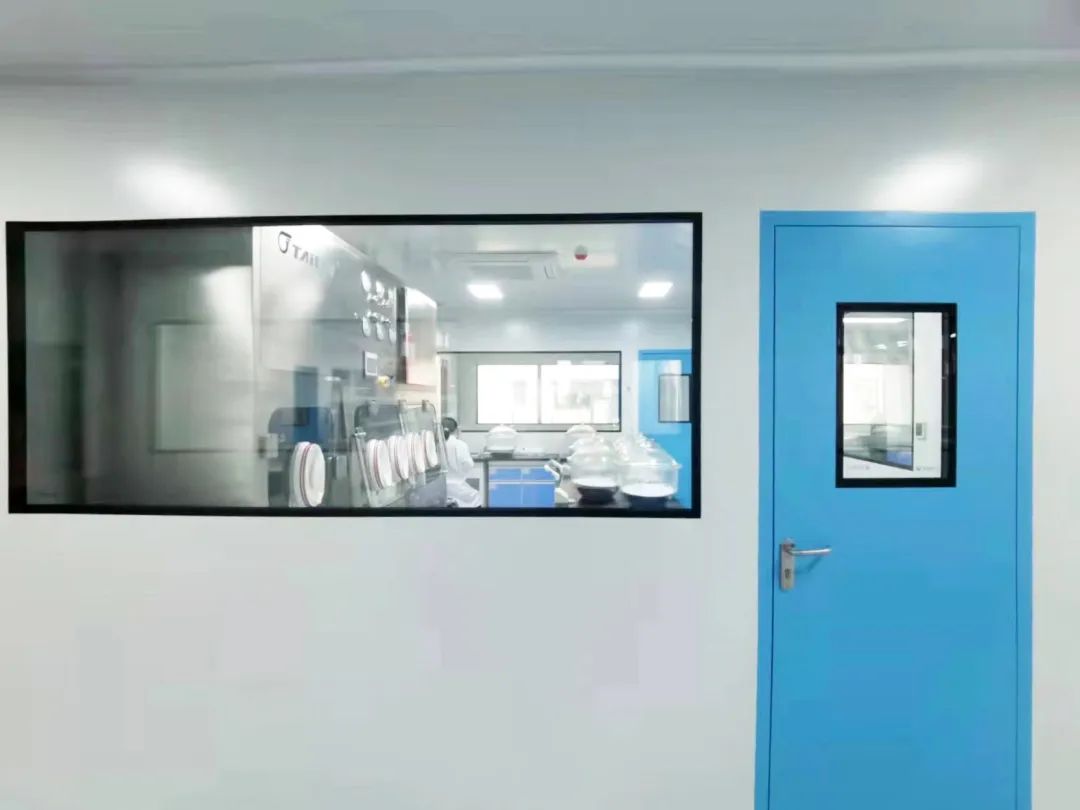Hollow glass is a new type of building material that has good thermal insulation, sound insulation, aesthetic applicability, and can reduce the weight of buildings. It is made of two (or three) pieces of glass, using high-strength and high-airtightness composite adhesive to bond the glass pieces with an aluminum alloy frame containing a desiccant, to produce high-efficiency sound insulation glass. The common hollow glass is 5mm double-layer tempered glass.
Many places in clean room, such as view windows on clean room doors and visiting corridors, require the use of double-layer hollow tempered glass.
Double layer windows are made of four sided silk screen tempered glass; The window is equipped with built-in desiccant and filled with inert gas, which has good sealing performance; The window is flush with the wall, with flexible installation and beautiful appearance; The thickness of the window can be made according to the thickness of the wall.


Basic structure of clean room window
1. Original glass sheet
Various thicknesses and sizes of colorless transparent glass can be used, as well as tempered, laminated, wired, embossed, colored, coated, and non reflective glass.
2. Spacer bar
A structural product composed of aluminum or aluminum alloy materials, used to fill molecular sieves, isolate insulating glass substrates, and serve as a support. The spacer has a carrier molecular sieve; The function of protecting the adhesive from sunlight and extending its service life.
3. Molecular sieve
Its function is to balance humidity between glass rooms. When the humidity between glass rooms is too high, it absorbs water, and when the humidity is too low, it releases water to balance the humidity between the glass rooms and prevent the glass from fogging.
4. Inner sealant
The butyl rubber has stable chemical properties, outstanding air and water tightness, and its main function is to prevent external gases from entering the hollow glass.
5. External sealant
The external adhesive mainly plays a fixing role because it does not flow due to its own weight. Outer sealant belongs to the structural adhesive category, with high bonding strength and good sealing performance. It forms a double seal with the inner sealant to ensure the airtightness of the tempered glass.
6. Filling gas
The initial gas content of insulating glass should be ≥ 85% (V/V) for ordinary air and inert gas. Hollow glass filled with argon gas slows down the thermal convection inside the hollow glass, thereby reducing the thermal conductivity of the gas. It performs excellently in sound insulation, insulation, energy conservation, and other aspects.
Main characteristics of clean room window
1. Sound insulation and thermal insulation
Hollow glass has excellent insulation performance due to the desiccant inside the aluminum frame passing through the gaps on the aluminum frame to keep the air inside the glass hollow dry for a long time; The noise can be reduced by 27 to 40 decibels, and when 80 decibels of noise are emitted indoors, it is only 50 decibels.
2. Good transmission of light
This makes it easy for the light inside clean room to be transmitted to the visiting corridor outside. It also better introduces outdoor natural light into visiting interior, improves indoor brightness, and creates a more comfortable production environment.
3. Improved wind pressure resistance strength
The wind pressure resistance of tempered glass is 15 times that of single glass.
4. High chemical stability
Usually, it has strong resistance to acid, alkali, salt, and chemical reagent kit gases, which makes it easily the preferred choice for many pharmaceutical companies to build clean rooms.
5. Good transparency
It allows us to easily see the conditions and personnel operations in clean room, making it easy to observe and supervise.
Post time: Jun-02-2023

